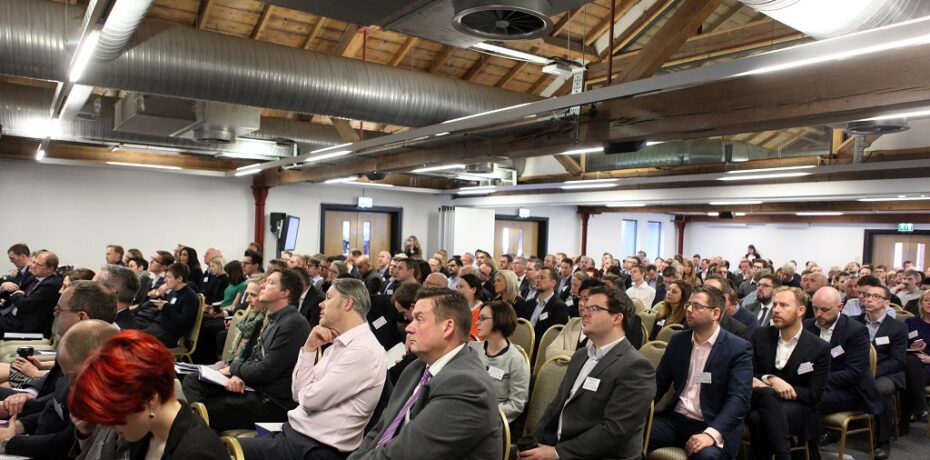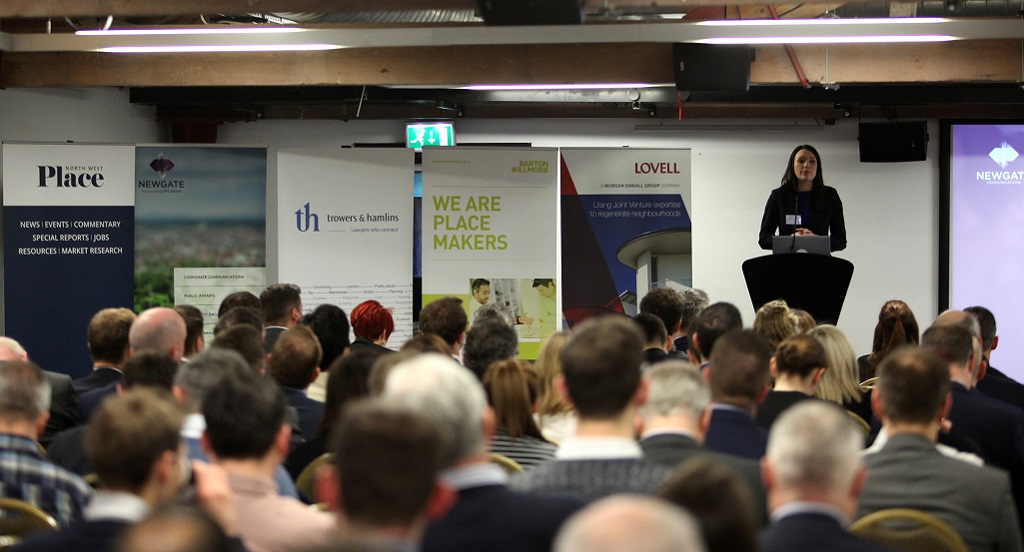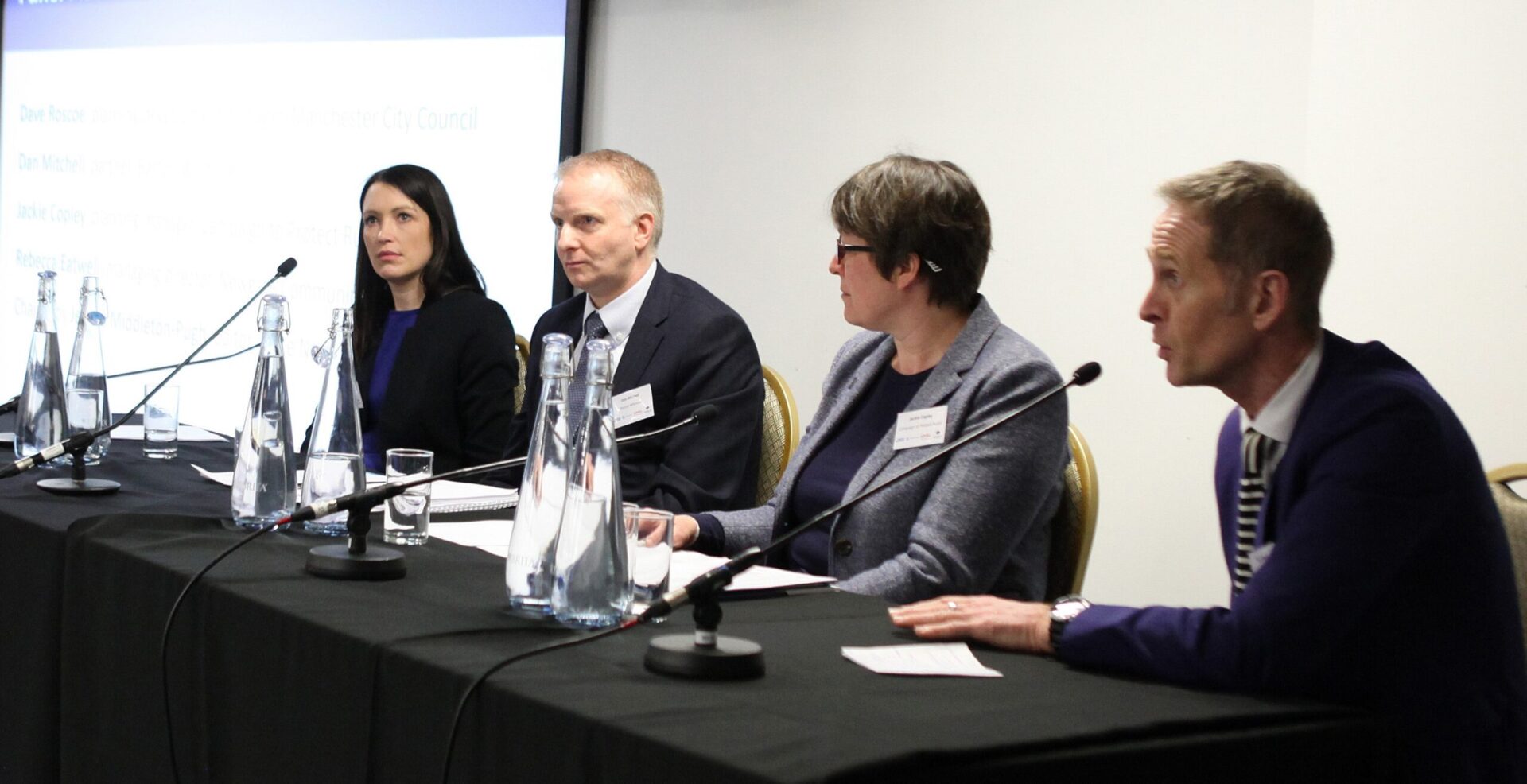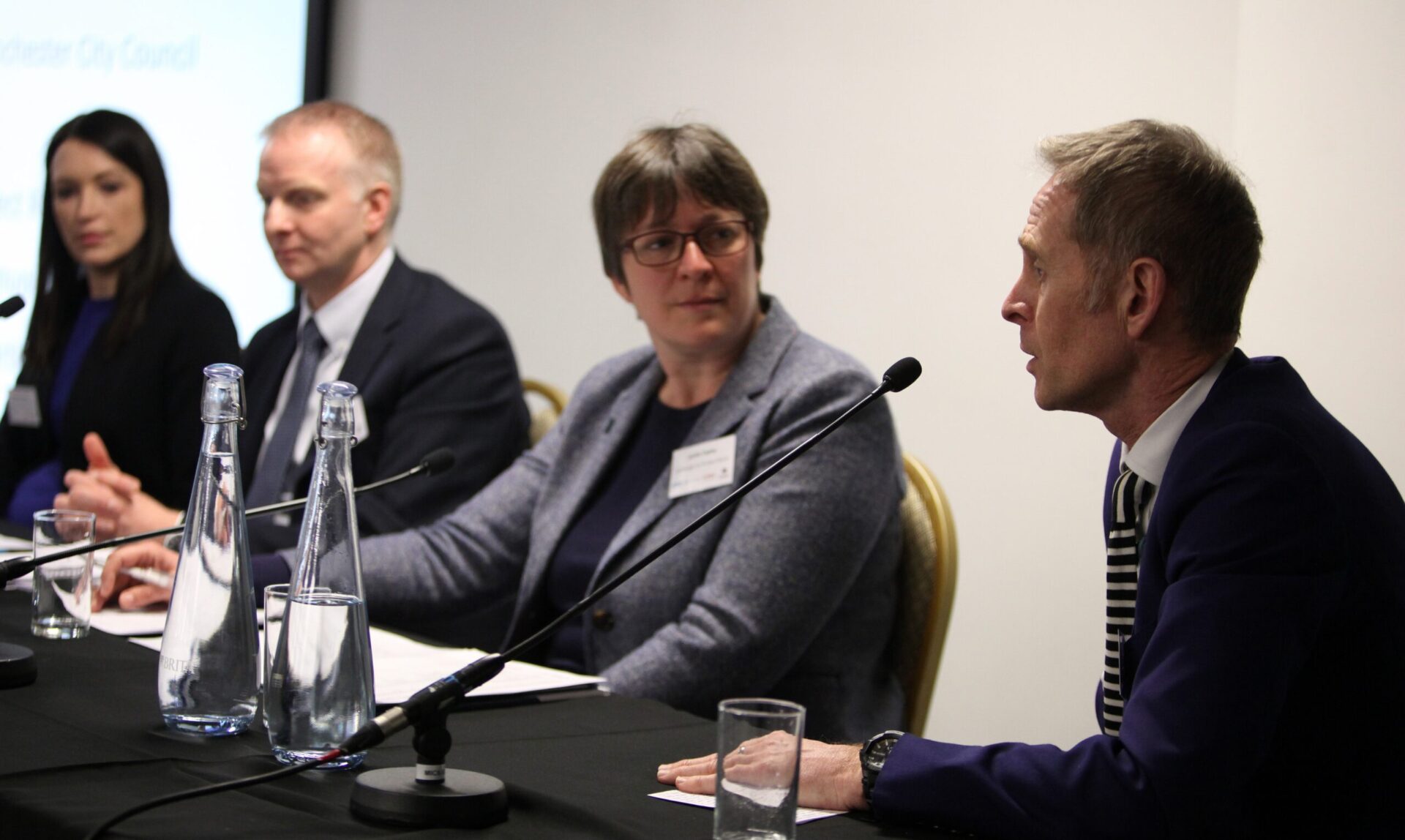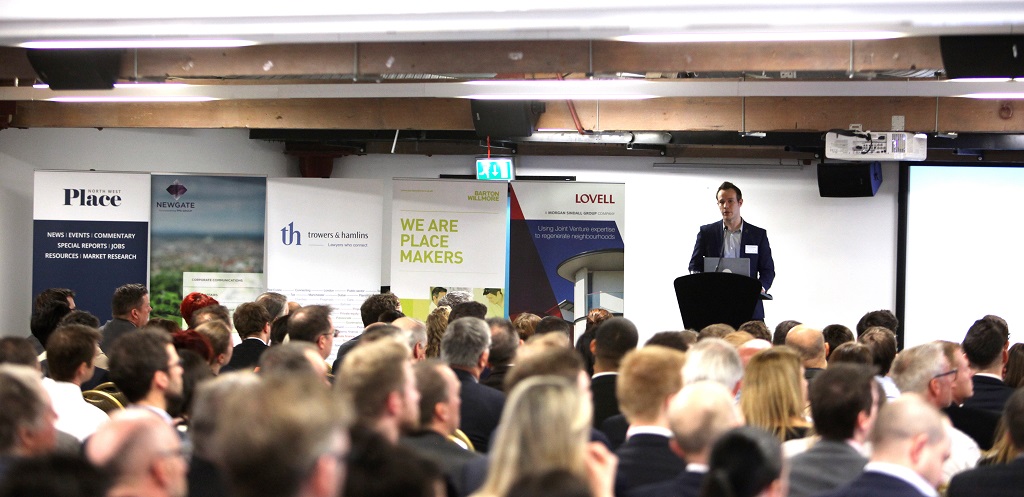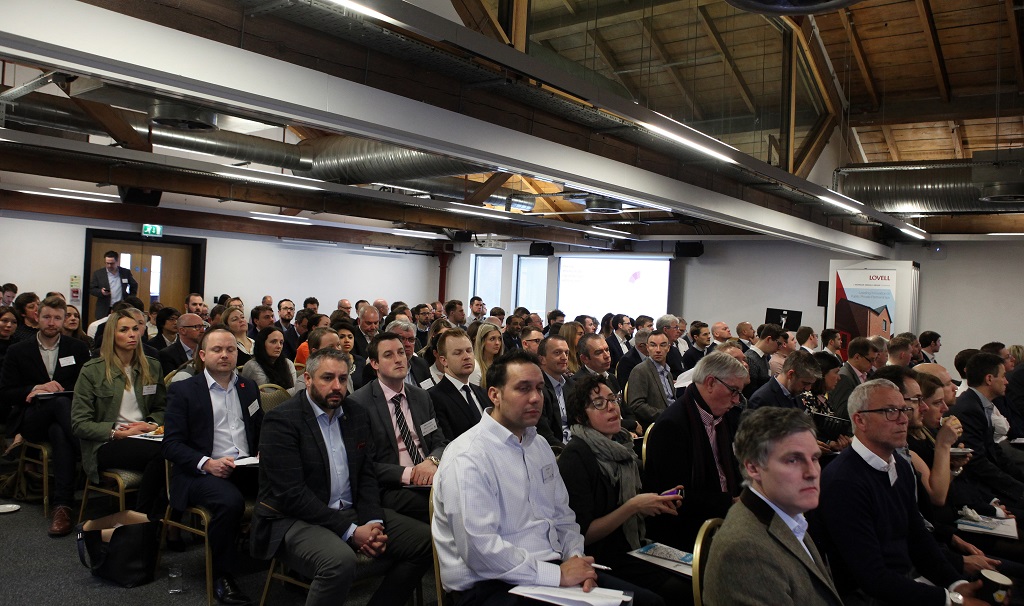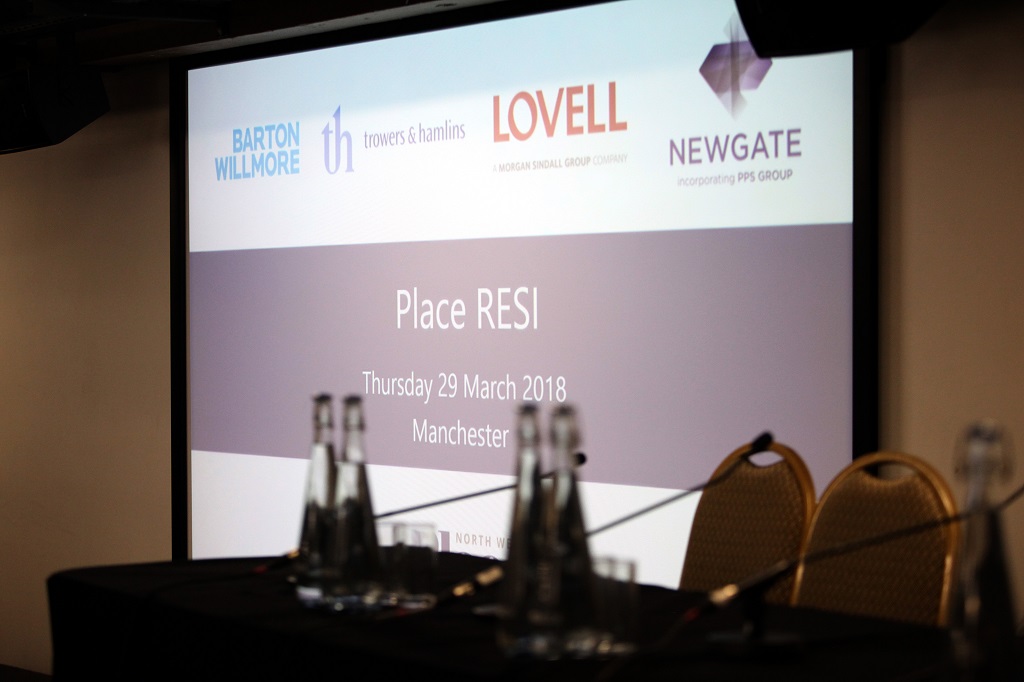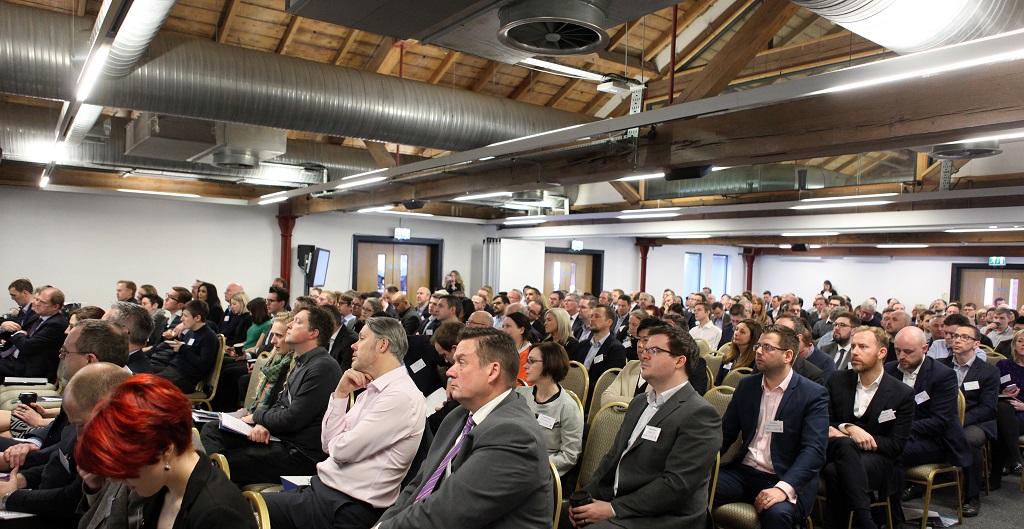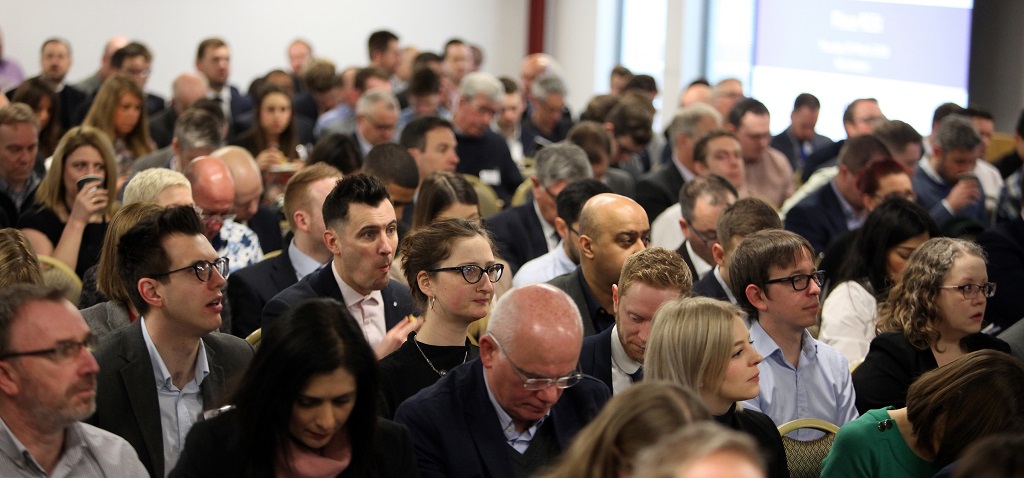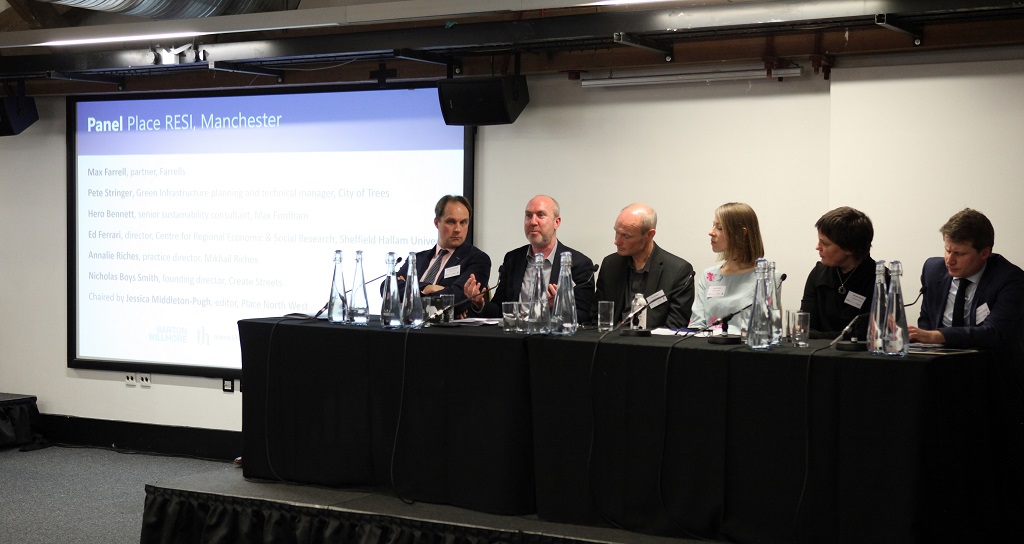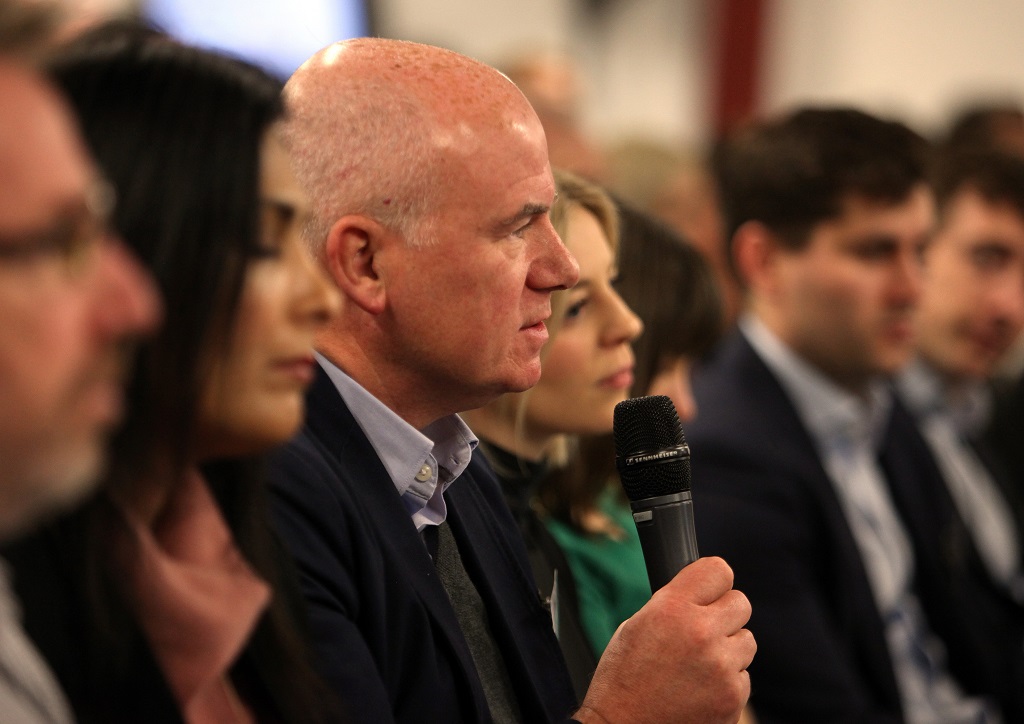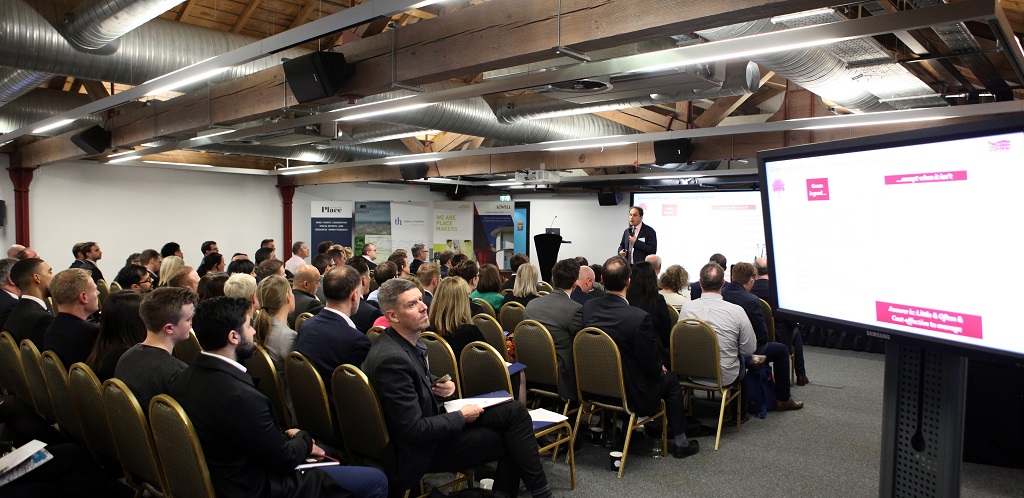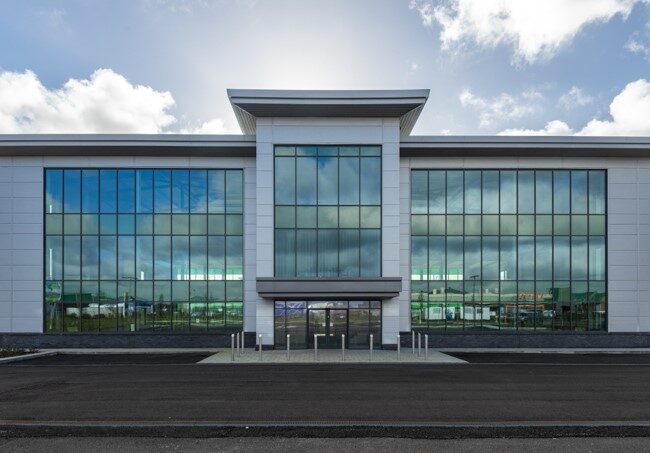Event Summary
Place RESI 2018 | Summary, slides + photos
In a wide-ranging half-day conference, a series of experts debated the housing challenge across the North West including greater engagement with communities, the adoption of modular technology, and more inclusive design, and how these will help the region’s cities and local authorities tackle the housing crisis.
More than 270 people attended Place RESI 2018 at The Museum of Science & Industry in Manchester, sponsored by Barton Willmore, Lovell Partnerships, Newgate Communications, and Trowers & Hamlins, and hosted by Place North West.

Speakers included Dave Roscoe, planning development manager at Manchester City Council; Jackie Copley, planning manager at the Campaign to Protect Rural England; Gwen Beeken, managing director at Procure Plus; Michael Crane, technical director at CIMC Modular Building Systems; James Pargeter, projects director, Greystar Real Estate Partners; Max Farrell, partner at Farrells; Michael Swiszczowski, associate director at Chapman Taylor; and Hero Bennett, senior sustainability consultant at Max Fordham.
Changing the housing conversation
The event opened with Newgate managing director Rebecca Eatwell, who highlighted research by the communications consultancy which outlined how and why local authorities need to “change the conversation around housing”.
- The research, covering local authorities in the UK, showed 43% of respondents would be in favour of a review of green belt land, but “very few” would be willing to back that stance publicly
- 61% felt the housing crisis was getting worse, while only 8% thought it was getting better
- 51% said slow-build out by developers was the biggest challenge to housing delivery, while only 18% it was strength of community opposition to development. Eatwell said this was “significantly lower” than expected
- The narrative can demonise older population being NIMBYs but there is also some evidence there is opposition from young people, even those struggling to get on the housing ladder,” she said. “We need to understand what young people want from their housing”
- She also called for greater engagement with communities on housing development, particularly around viability assessments, which can be poorly understood by both residents and councils
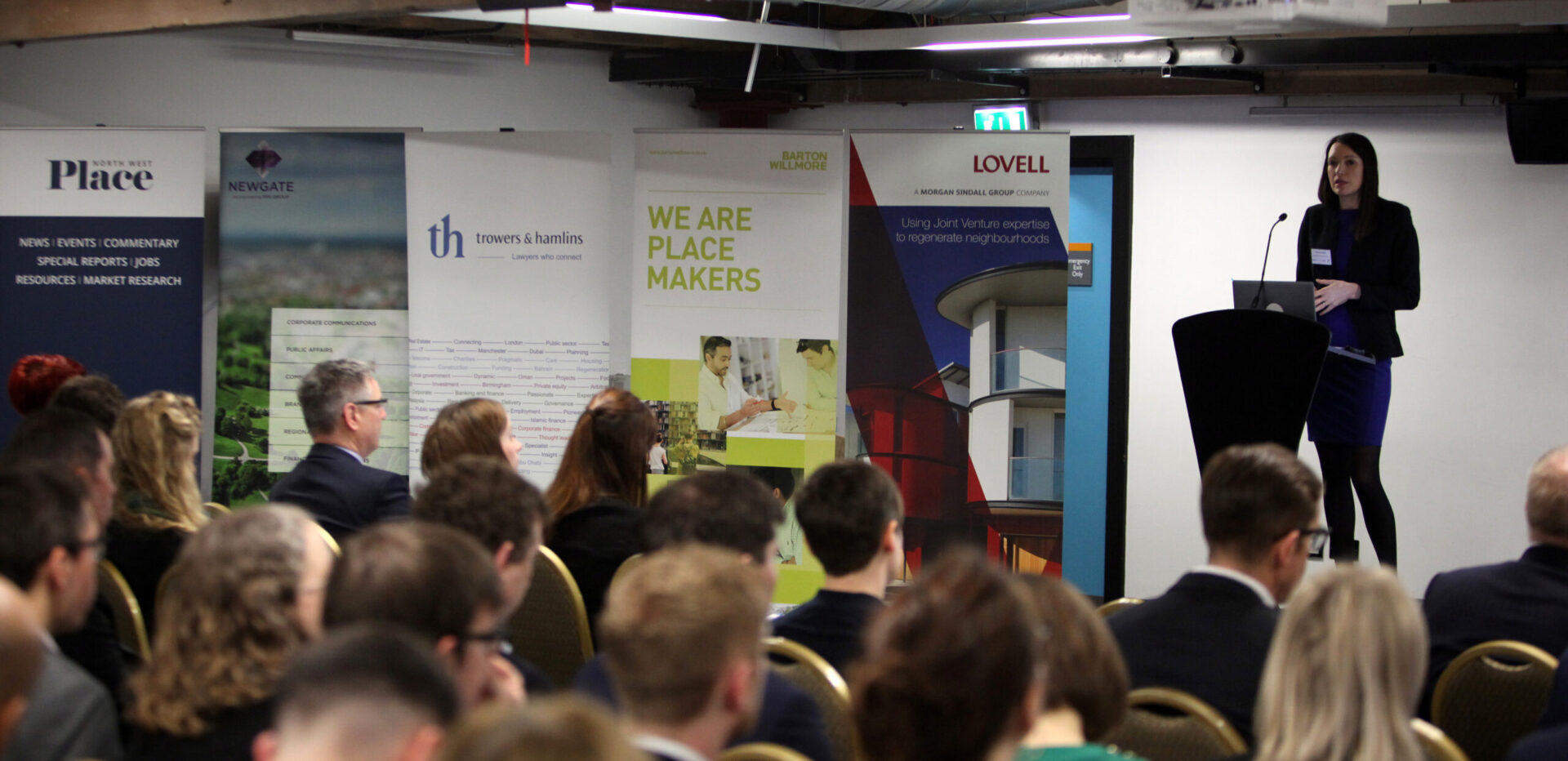
Rebecca Eatwell of Newgate
Eatwell then joined a four-person panel featuring Dave Roscoe, Jackie Copley, and Dan Mitchell of Barton Willmore, to discuss the impact of politics, planning, and public consultation on housing policy.
- Both Eatwell and Roscoe agreed the delivery of affordable homes was “much more complicated than the media narrative had suggested”, with Roscoe arguing the level of affordable housing in Manchester had been “misunderstood”
- He pointed out that one in three homes in the city was is socially rented, making it the highest proportion of existing stock in the country. “That doesn’t mean we don’t need more – we do – but we need housing from affordable, to mid-range, to very expensive,” he said
- Mitchell argued the debate should not be whether to deliver city-centre living, brownfield sites, or green belt release; but the answer would be “all of the above” to help address the housing crisis
- Copley said the Campaign to Protect Rural England was “very pro-housing” but argued for the need for more affordable homes, given right-to-buy was “eroding the ability of local authorities to deliver them”
- The debate moved on to the planning process, where Copley called for greater transparency in planning and development, with housebuilders often failing to engage at early stages with local communities
- Eatwell said communities were more likely to get involved with consultations if they are “mobilised” to do so, often by campaign groups objecting to projects. “It’s difficult to get them to engage if they are pro-development, and we need to think about how we can reach the ‘silent majority’”
- Mitchell said planning departments were “massively under-resourced”, with “one or two planners dealing with reams and reams of paperwork,” making it all the more difficult for the process to be managed to keep all parties happy
A question from the audience to Roscoe queried whether Manchester would still be using “favoured architects” to deliver projects in the city centre, following changes to the city council’s leadership team.
Roscoe, however, dismissed the idea that the council had favoured practices, and stated it had “no control whatsoever over who people choose to use as architects or planning consultants”.
Following a networking break, the debate moved on to delivery, and particularly how modular technologies could be adopted to improve both the quality and speed of housing projects.
A modular future
A presentation by Michael Swiszczowski of Chapman Taylor outlined the practice’s Umbrellahaus offsite modular construction solution.
- By using modular techniques, speed of delivery and cost savings can be achieved
- But importantly for institutional investors, there is a focus on quality: PRS investors in particular need to “build quality” into housing schemes to make sure the asset gets best value over a lifespan of 30 years or more
- An example of the system in action was at the Trafford Centre’s Holiday Inn Express, delivered by Bowmer & Kirkland, Chapman Taylor Architects, and CIMC. Using a modular system, 16 bedrooms could be delivered per day, while the construction programme was cut from 15 months to nine months
- The client also saved around £1m on the £16m project by using a modular system.
- There are opportunities to apply this technology to other areas including PRS and student clusters, not just hotels
A panel of Swiszczowski; Gwen Beeken of Procure Plus; Katie Saunders of Trowers & Hamlins; Michael Crane of CIMC; and James Pargeter of Greystar Real Estate Partners then debated the challenges to the adoption of modular technology across the housing market.
- Saunders argued early manufacturer and client involvement was vital to help de-risk modular projects, and said there was a “lack of understanding” about how using modular impacts warranties and guarantees
- Swiszczowski said the conception of modular as being “high cost” were being “skewed”, with planning for projects often being done without modular techniques in mind, and modular being retrospectively applied to schemes. “There a lot of efficiencies we can gain by planning early for modular,” he said
- Crane said it often takes “a lightbulb moment” for investors to understand the benefits of modular, as some still have the conception that “modular means post-war pre-fabs”. “People are starting to realise this is a tried-and-tested system that has real benefits”
- Beeken argued that while the model had been a great success in a number of sectors, it is much more difficult to apply it to traditional housebuilding where methods and speeds of delivery and sales are “very different”
- Pargeter agreed, saying speed of delivery had often “not been housebuilders’ priority”, while a number of firms had gone into modular “as the political flavour of the month” without fully understanding it
- “We’re trying to persuade other investors to come on this journey with us,” he added. “We have to convince them it’s the right thing to do but we end up with a quality product that’s going to last and be of a predictable nature”
- Beeken added the benefits of modular in terms of skills could be massive, but companies will be required to “think differently and enter with an open mind”, with a particular focus on upskilling factory workers to on-site operatives and managers
Following another short break, delegates reconvened to hear from Nicholas Boys Smith, founding director of Create Streets, a research institute which promotes the delivery of urban homes in terraces rather than towers.
Building new neighbourhoods
He outlined how data suggested traditional urban patterns of conventional streets with gentle density were “incredibly well correlated” with both happier residents and better investment. The research found that two-thirds of people wouldn’t consider buying a new-build home, shining a light on the perceptions of quality in the housing market – that “old houses are good, and new ones aren’t”.
Analysis by Create Streets of historical research suggested 66% of surveys carried out between 1962 and 2007 argued that living in high-rise towers had a negative impact on residents’ stress levels, while 92% of studies showed high-rise towers also had a negative impact on residents’ satisfaction with their home.
Conventional city blocks of multiple terraces and semi-detached homes, he argued, led to more useable green space, less crime, and an increase in walking, as well as more subtle changes in behaviours: a study in Vancouver suggested residents in high-rise blocks were less likely to know their neighbours names, and less likely to trust them, than those living in detached homes.
Boys Smith then joined a panel of speakers made up of Max Farrell; Pete Stringer, planning & technical manager at City of Trees; Hero Bennett of Max Fordham; Ed Ferrari, director of the Centre for Regional Economic & Social Research at Sheffield Hallam University; and Annalie Riches, founding director of Mikhail Riches.
- Farrell, who is working on Manchester’s £1bn Northern Gateway, said a one-size-fits-all approach to housing and masterplanning was not the way forward, and instead developers should focus on “making places that have homes suitable for everyone”
- “One type of home is not the answer to the issues we are facing, particularly when you look at the realities of land and land availability; we have to look to optimise the land that we have where it can be developed”
- Ferrari said policymakers should not “make any assumptions about the tendencies of certain socio-economic groups and the type of housing they prefer”, and instead argued the focus should be on how homes connect between places – particularly schools, hospitals, and places of work
- Bennett agreed high-rise blocks should not be the only solution to housing, particularly given the constraints they have around sustainability and energy efficiency: “These can often only be remedied by the use of modular, and sometimes developers are resistant to that”
- Stringer highlighted the role of green infrastructure in improving both new and existing neighbourhoods, but said more needed to be done to ingrain it in urban design: “Developers understand green infrastructure has a value; we have to work with them to make sure it’s integrated into the development process and it isn’t an add-on”
- Boys Smith said the UK’s “strange” planning system was responsible for the rise of higher-density, high-rise blocks: “The existential difference is there is less certainty in terms of what you will and won’t be allowed to build in the UK, compared with Europe. How high you can build, who gets to live there and so on, is all up for debate.
- “The consequence is that when land comes up for sale, it comes down to who can squeeze out the most value out of it,” he argued
- Farrell agreed the planning system was much too reactive, and said a more proactive approach to masterplanning and urban design was needed to create better neighbourhoods.
You can view the slides made available from the presentations on our SlideShare page, using the below link:
Click any image below to launch gallery:
- Rebecca Eatwell, Newgate Communications
- From left: Rebecca Eatwell, Newgate Communications; Dan Mitchell, Barton Willmore; Jackie Copley, Campaign to Protect Rural England; Dave Roscoe, Manchester City Council
- Dave Roscoe, Manchester City Council
- Michael Swiszczowski, Chapman Taylor
- From left: Michael Swiszczowski, Chapman Taylor; Katie Saunders, Trowers & Hamlin; Michael Crane, CIMC Modular Building Systems; Gwen Beeken, Procure Plus; James Pargeter, Greystar
- Nicholas Boys Smith, Create Streets
- From left: Nicholas Boys Smith, Create Streets; Max Farrell, Farrells; Pete Stringer, City of Trees; Hero Bennett, Max Fordham; Annalie Riches, Mikhail Riches; Ed Ferrari, Centre for Regional Economic & Social Research


